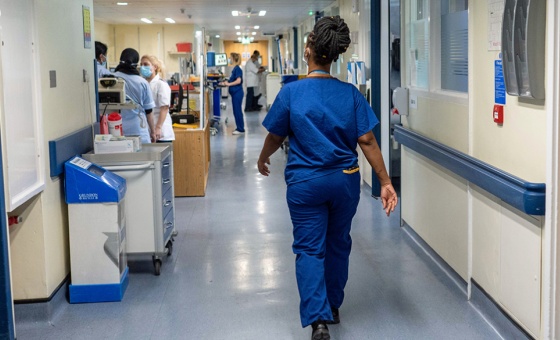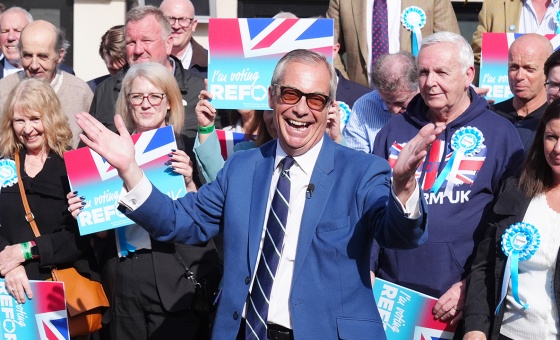This is the last article you can read this month
You can read more article this month
You can read more articles this month
Sorry your limit is up for this month
Reset on:
Please help support the Morning Star by subscribing here
CUBA is a nation that finds no difficulty in remembering and commemorating its past, and this year sees a number of anniversaries that, in part, tell the modern story of the country and its enduring struggle to free itself from imperialist domination.
Two hundred years ago in 1823, US President James Monroe declared his government’s intention to dominate the entirety of the Americas.
While the anniversary of the Monroe Doctrine certainly won’t be celebrated in Cuba, tributes were paid across the country on January 28 to mark the 170th anniversary of the birth of Cuba’s national hero Jose Marti.
But it’s on July 26 that Cubans will celebrate what is perhaps the most important day in their calendar. “National Rebellion Day” will, this year, commemorate the 70th anniversary of the daring attack on the Moncada Barracks. It is this day, above all others, that represents the success of Cuba’s fight for self-determination.
Batista’s Cuba
On the morning of March 10 1952, Cubans awoke to the news that Fulgencio Batista had taken power in a carefully orchestrated coup d’etat.
Batista had earlier served as president from 1940 to 1944 and had effectively held unofficial state power even earlier, from 1933.
While he was initially viewed as a progressive figure, by the time he returned to Cuba in 1952 to contest the presidential elections (following years spent in the US) things had changed.
With the backing of the army, Batista staged his coup, seized power three months ahead of the elections that he was certain to lose and established a military dictatorship. By March 27, less than three weeks after the coup, the US had formally recognised his government.
Batista’s Cuba was one defined by extreme inequality and misery for the majority of Cubans, widespread corruption and an increasingly close relationship with the US government.
The island had existed as a de facto colony of its neighbour to the north for generations. However, under Batista this dependence deepened, and Cuba (Havana in particular) became a hedonistic playground for the US elite, where organised crime was welcomed with open arms.
Speaking to a French journalist in 1963, US President John F Kennedy said: “I believe that there is no country in the world, including any and all the countries under colonial domination, where economic colonisation, humiliation and exploitation were worse than in Cuba … to some extent it is as though Batista was the incarnation of a number of sins on the part of the United States.”
In a period of huge social ferment and discontent, it didn’t take long for opponents of Batista’s brutal dictatorship to organise to bring about its end.
Preparations
At the time of Batista’s seizure of power, Fidel Castro was a charismatic young lawyer and an aspiring politician in the Orthodox Party, due to stand as a candidate for the House of Representatives in the elections of 1952.
The cancellation of those elections, and the failure of a legal case which Fidel himself brought against Batista’s regime, demonstrated to many that parliamentary and constitutional means would be insufficient to end the dictatorship.
Preparations began in Santiago de Cuba for an attack on the Moncada Barracks, which it was hoped would ignite a wider rebellion against Batista’s regime.
The barracks were the second largest on the island, with a garrison of more than 1,000 soldiers, and would provide the arms and ammunition needed.
Fidel, his brother Raul and their comrades raised funds for weapons and cars and went about recruiting volunteers, including two women — Haydee Santamaria and Melba Hernandez.
The attack was planned meticulously. The date was set for July 26 to coincide with carnival in Santiago, as the rebels hoped that police officers and soldiers would be drunk (or at least hungover) and that the large crowds thronging the streets would disguise the presence of unfamiliar faces.
A farm was rented outside the city to store army uniforms and weapons. Haydee played a key role in the transporting of the weapons and Melba procured the uniforms and stitched different ranks on them.
The rebels made their way independently to Santiago to avoid suspicion. The forces would be divided into groups: Raul’s men would attack the Palace of Justice, allowing them to control access to the adjacent barracks; Abel Santamaria, brother of Haydee, would take control of the military hospital to take care of any wounded; and Fidel himself would lead the attack on the barracks, with 95 men wearing army uniforms and arriving in separate vehicles.
Before the attack, Fidel addressed his comrades and evoked the spirit of Marti, placing their plans for revolution firmly in the context of Cuba’s long struggle for independence: “In a few hours you will be victorious or defeated, but regardless of the outcome — listen well, friends — this movement will triumph. If you win tomorrow, the aspirations of Marti will be fulfilled sooner. If we fail, our action will nevertheless set an example for the Cuban people, and from the people will arise fresh new men willing to die for Cuba.”
The attack
However, despite the plan, the assault itself failed almost immediately. Early on the morning of July 26, the first four rebels were quickly recognised as outsiders and guards sounded the alarm.
Of Fidel’s 94 men, only 45 arrived at the barracks. Many of the forces under the command of Abel Santamaria and Raul were killed or captured.
Batista’s army, which had lost 33 soldiers in the attack, responded violently. They killed more than 50 of the rebels after taking them prisoner and tortured many more.
Both Haydee Santamaria and Melba Hernandez were burned with cigarettes during their imprisonment. Santamaria suffered a much crueller punishment. Guards brought her the eye of her brother Abel and the testicle of her partner Boris Luis Santa Coloma, in a sadistic attempt to extract information.
“If you did that to them and they didnʼt talk, much less will I,” she responded.
Many of the rebels, including Fidel and Raul, managed to escape torture and execution and were put on trial instead. Fidel famously claimed his right as a lawyer to assume his own defence.
When he was asked who the intellectual author of the assault on Moncada was, he replied, “only Jose Marti, the apostle of our independence.” On the final day of the trial, he delivered one of his most famous speeches.
“Condemn me, it does not matter,” Fidel said. “History will absolve me.”
The rebels were convicted and received various prison sentences. Fidel himself received 15 years. But following national and international pressure in 1955, Batista’s regime was forced to release many political prisoners, including the Moncada rebels.
Moncada’s legacy
What seemed at the time to be an unmitigated failure instead laid the foundation of the movement that would eventually bring an end to the Batista dictatorship.
Following their release from prison the rebels, under the leadership of Fidel, began once again to organise, this time under the banner of El Movimiento 26 de Julio — the 26th July Movement.
But more than providing a name for this new revolutionary movement, the events of that day inspired many others to join the fight. Cubans like Celia Sanchez, Vilma Espin and Frank Pais joined the struggle and began to organise among townspeople and students in Cuba, creating the structure for an urban underground resistance to complement the guerilla war in the mountains that was being planned by Fidel and others in Mexico.
“The revolution,” said Sanchez, “was born at Moncada.”
Walk through the streets of Havana, or any Cuban city or town, and it won’t be long before you encounter monuments to the nation and memorials to the past.
The red, white and blue of the Cuban flag seems almost ubiquitous. The representations of Marti — from the looming statue in Revolution Square in Havana to the numerous busts that populate public spaces — constantly serve as a reminder of his singular importance in the Cuban national story.
But you will also come across the black and red of the 26th July Movement. It remains a cherished symbol of the Cuban Revolution that triumphed in delivering what Cubans had fought for, for generations: a truly independent Cuba, free from imperialist domination, which would place the wellbeing of its people at its heart.
As the great Cuban poet Nicolas Guillen summed up: “Lo que Marti prometio, Fidel lo cumplio.” What Marti promised, Fidel fulfilled.
This year, as Cubans celebrate the 70th anniversary of the attack on Moncada, Cuba will have endured 62 years of economic warfare from the US government.
This act of imperialist aggression, in the form of an illegal and cruel blockade, continues to cause hardship across the island.
Those of us who continue to take inspiration from the Cuban Revolution and its incredible achievements in health, education, social justice and internationalism must continue to show our solidarity with Cuba in whatever way we can.
The spirit of Moncada — when brave young Cubans overcame tremendous adversity and a much more powerful enemy to build a better society — has sustained the revolution since 1953. It too can guide our struggle to end the blockade.
This article is republished from Cuba Si, magazine of the Cuba Solidarity Campaign. For more information about the campaign, including details of how to join, visit cuba-solidarity.org.uk.











